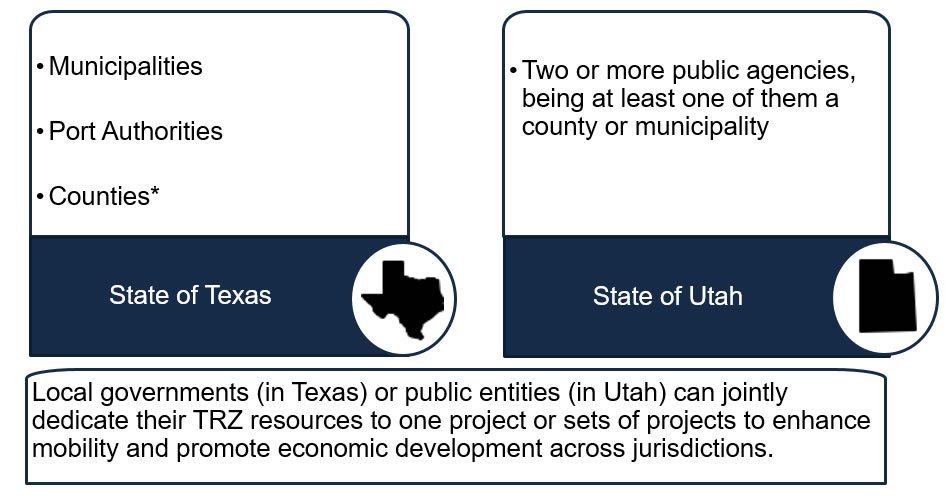
* According to the Texas Attorney General, the ability of a county to use TRZ revenue as debt collateral could be constitutionally challenged.
Texas law allows for the creation of a TRZ for a variety of transportation projects, including, tolled and non-tolled roads; passenger or freight rail facilities; certain airports; pedestrian or bicycle facilities; intermodal hubs; parking garages; transit systems; bridges; certain border-crossing inspection facilities; and ferries.
Texas law does not limit the use of TRZ funds to State or Federal transportation projects.
Texas Transportation Code Sections 222.105–111
Utah law allows local governments to define the transportation need and proposed improvement within the zone that can be funded using TRZ revenues.
Utah law does not limit the use of TRZ funds to local, State, or Federal transportation projects.
Utah Code Section 11-13-227



Financing of improvements using current revenues, such as general taxation, fees, and service charges
Issuing debt securities to fund day-to-day obligations or capital expenses such as transportation projects.
Secure funds via direct loans and credits to pay for transportation projects.